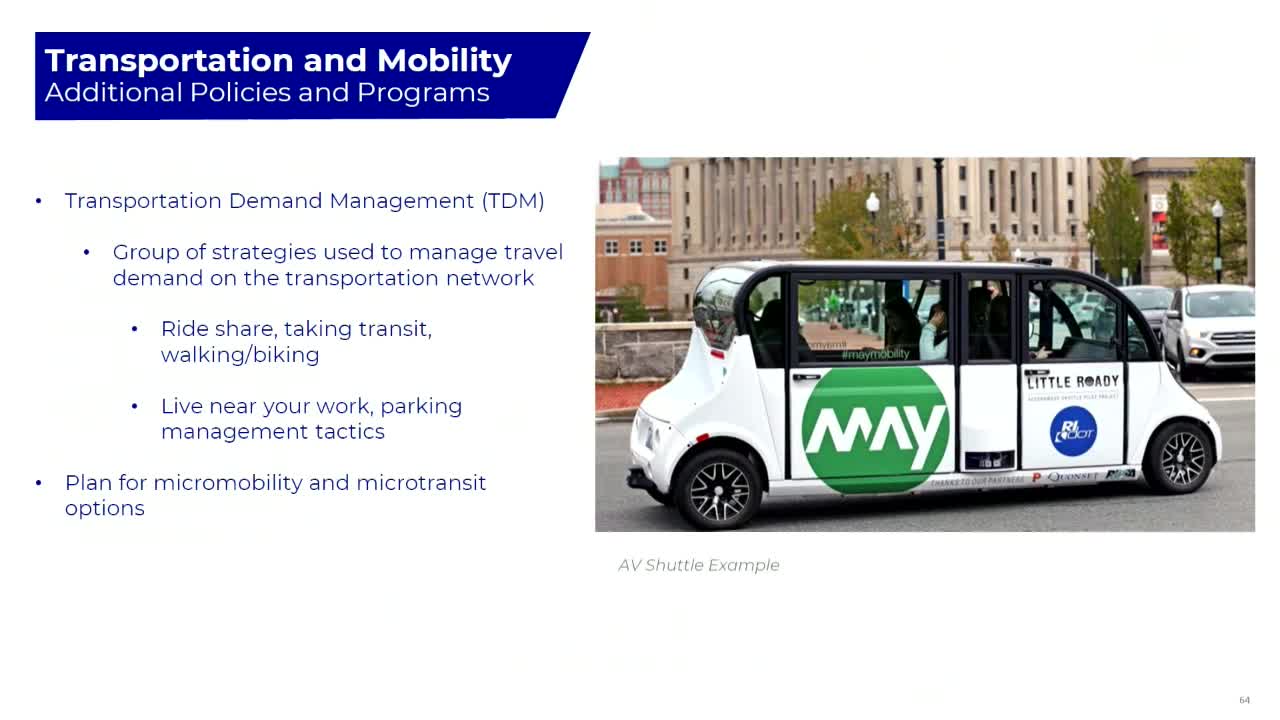Gateway Plan Proposes Interconnected Transportation Network and Innovative School Design
September 08, 2025 | Howard County, Maryland
This article was created by AI summarizing key points discussed. AI makes mistakes, so for full details and context, please refer to the video of the full meeting. Please report any errors so we can fix them. Report an error »

The Howard County government held its monthly meeting on September 8, 2025, focusing on the Gateway project, a comprehensive 30-year plan aimed at transforming the area through innovative transportation and infrastructure improvements. The meeting began with a presentation outlining key recommendations for creating an interconnected transportation network that accommodates various modes of travel, including walking, biking, and driving. The plan emphasizes the importance of micro-mobility options such as bike shares and electric scooters, as well as the potential for autonomous shuttles.
The discussion progressed to public infrastructure needs, categorizing essential items such as schools, public safety facilities, and parking garages. It was noted that while the water supply is expected to be adequate, significant improvements to the sewer system will be necessary in the coming years. The plan also highlighted the importance of developing a phased financing strategy to support these infrastructure projects.
A significant portion of the meeting was dedicated to the future of schools in the Gateway area. The plan suggests exploring alternative school designs that occupy smaller footprints and utilize shared spaces, which could enhance efficiency and reduce land use. The potential student generation rates from new multifamily units were discussed, indicating that further evaluation will be needed as redevelopment progresses.
The fiscal analysis presented during the meeting revealed two market-based scenarios for the Gateway project, estimating potential revenues ranging from $70 million to $112 million for the county, alongside additional excise and transfer tax revenues. However, these figures do not account for capital infrastructure costs, which will need to be assessed in future planning.
In concluding remarks, the presenters emphasized the need for strategic actions to catalyze redevelopment, including establishing an innovation district and acquiring suitable sites for public infrastructure. The importance of having a champion to advocate for the project and foster community support was also underscored.
The meeting concluded with a call for questions from council members, indicating a collaborative approach to refining the Gateway plan and ensuring its successful implementation. Overall, the discussions highlighted the transformative potential of the Gateway project for Howard County, setting the stage for future developments and community engagement.
The discussion progressed to public infrastructure needs, categorizing essential items such as schools, public safety facilities, and parking garages. It was noted that while the water supply is expected to be adequate, significant improvements to the sewer system will be necessary in the coming years. The plan also highlighted the importance of developing a phased financing strategy to support these infrastructure projects.
A significant portion of the meeting was dedicated to the future of schools in the Gateway area. The plan suggests exploring alternative school designs that occupy smaller footprints and utilize shared spaces, which could enhance efficiency and reduce land use. The potential student generation rates from new multifamily units were discussed, indicating that further evaluation will be needed as redevelopment progresses.
The fiscal analysis presented during the meeting revealed two market-based scenarios for the Gateway project, estimating potential revenues ranging from $70 million to $112 million for the county, alongside additional excise and transfer tax revenues. However, these figures do not account for capital infrastructure costs, which will need to be assessed in future planning.
In concluding remarks, the presenters emphasized the need for strategic actions to catalyze redevelopment, including establishing an innovation district and acquiring suitable sites for public infrastructure. The importance of having a champion to advocate for the project and foster community support was also underscored.
The meeting concluded with a call for questions from council members, indicating a collaborative approach to refining the Gateway plan and ensuring its successful implementation. Overall, the discussions highlighted the transformative potential of the Gateway project for Howard County, setting the stage for future developments and community engagement.
View full meeting
This article is based on a recent meeting—watch the full video and explore the complete transcript for deeper insights into the discussion.
View full meeting
